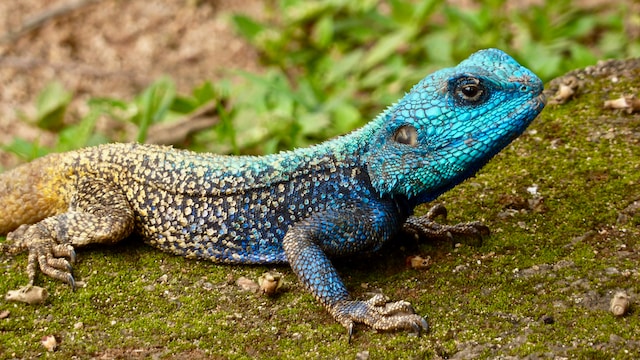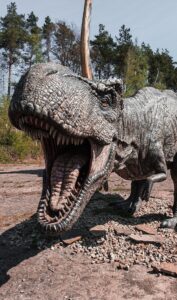
The Anatomy of Reptiles: Understanding Their Unique Physical Characteristics
Contents
- 1 Introduction
- 2 Reptiles are cold-blooded and have a cartilaginous skeleton
- 3 In reptiles, the lungs never completely fill with air.
- 4 Reptile mouths are generally wide, with razor-sharp teeth.
- 5 Reptiles have many subgroups, including snakes, lizards, turtles and crocodiles.
- 6 A snake’s scales overlap each other like roof tiles.
- 7 Snakes shed their skin periodically to allow new scales to grow in place of old ones.
- 8 Lizards’ scales protect them from predators by making them slippery to touch.
- 9 Although there are many similarities between reptiles and other animals, reptiles do have some unique physical characteristics
- 10 Conclusion
Introduction
Reptiles are cold-blooded, vertebrate animals that have scales and lay eggs. They’re also one of the earliest groups of reptiles that evolved from amphibians, which first appeared millions of years ago. Reptiles can be found on every continent except Antarctica, but they have very different body structures depending on the type of reptile they are.
Reptiles are cold-blooded and have a cartilaginous skeleton
This means that reptiles do not regulate their own body temperature, but instead rely on the environment around them to keep warm or cool. Because of this, reptiles must avoid extreme temperatures by seeking shelter during cold weather and basking in sunlight during hot weather.
The cartilaginous skeleton is lighter than a bony skeleton; therefore, it allows for greater mobility and flexibility in animals like snakes who may use their entire bodies as weapons against prey or predators (for example: constrictors). However, because cartilaginous skeletons grow slower than bony ones do–and don’t have any bone marrow inside them–they aren’t able to heal wounds as quickly as other animals would be able to heal theirs if they were injured by another animal’s sharp teeth/claws/talons etcetera…
In reptiles, the lungs never completely fill with air.
Reptiles have lungs, but they don’t breathe the same way as you do.
Unlike humans and other mammals, reptiles don’t have a complete respiratory system. Their lungs never fill with air; instead, they rely on their skin and scales to absorb oxygen from the surrounding environment through capillaries (tiny blood vessels). This is called “skin-breathing.” The air that gets into their lungs isn’t connected to anything else in the body–it just floats around inside until it’s absorbed by these tiny blood vessels.
Because there is no connection between reptiles’ lungs and their throats or esophagus (the tube that carries food from your mouth down into your stomach), they can’t breathe while swallowing food or water like we can when we swim underwater!
Reptile mouths are generally wide, with razor-sharp teeth.
- This allows them to tear food and crush bones with their powerful jaws.
- Reptiles replace their teeth periodically, with the exception of snakes (who don’t).
Reptiles have many subgroups, including snakes, lizards, turtles and crocodiles.
Reptiles are cold-blooded, meaning they cannot regulate their own body temperature. Reptile skin is covered in scales, which help them to retain moisture. Most reptiles have a cartilaginous skeleton–meaning that the bones are made of cartilage instead of bone–and a three-chambered heart (like mammals).
A snake’s scales overlap each other like roof tiles.
Scales are the most distinctive feature of reptiles. They are made from keratin, a protein that is also found in hair and nails. Unlike fish scales, reptile scales overlap each other like roof tiles. This allows them to move freely with their bodies as they crawl around on land or swim through water.
This overlapping structure helps protect reptiles from predators by providing extra protection against bites or scratches while still allowing them enough flexibility to move around easily without getting stuck on things like plants or rocks that might be lying around where they live.
Snakes shed their skin periodically to allow new scales to grow in place of old ones.
Many species of reptiles, including lizards and crocodiles, shed their skin in small patches. This process is called molting or ecdysis (from the Greek word for ‘to molt’).
Snakes are unique among reptiles because they shed their entire outer layer at once–a practice known as sloughing off or eclosion (from the Latin word for ‘to emerge’).
Lizards’ scales protect them from predators by making them slippery to touch.
Scales are an essential part of a reptile’s skin. They are made up of keratin, the same material that makes up human fingernails, and they overlap like roof tiles on top of each other. This helps to protect them from predators by making them slippery to touch.
Scales also help prevent water loss because they’re waterproof; reptiles can’t sweat like mammals do, so they have to deal with their body heat differently than we do–by panting through their mouths when it gets too hot! Scales also have another purpose: If a predator bites into a lizard’s skin, its scales will break off instead of staying attached so that it can escape while protecting itself from being eaten (and leaving behind some tasty bits for its attacker).
Although there are many similarities between reptiles and other animals, reptiles do have some unique physical characteristics
For example:
- Reptiles are cold-blooded. This means that they cannot regulate their body temperature by themselves and must rely on the environment around them to help regulate it for them. Most reptiles use sunlight or heat from another source to warm up their bodies but will also use behavioral methods such as basking in the sun or seeking shade when needed.
- Reptiles have a cartilaginous skeleton rather than one made of bone as we mammals do. The only exception here is birds who have both types since they evolved from dinosaurs (who were also birds). Cartilage does not harden over time like bone does so this makes it much lighter weight than most other vertebrates including humans!
Conclusion
Reptiles are cold-blooded and have a cartilaginous skeleton. In reptiles, the lungs never completely fill with air. A snake’s scales overlap each other like roof tiles while lizards’ scales protect them from predators by making them slippery to touch.



Average Rating